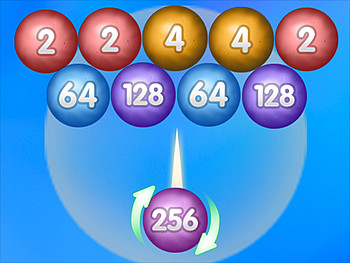The gaming landscape has evolved dramatically, offering players two main options: browser games and mobile apps. Each platform comes with distinct performance characteristics that impact both player experience and development complexity. 🎮 Whether you're a developer choosing your next project platform or a gamer curious about technical differences, understanding these performance aspects is crucial!
In this comprehensive guide, we'll dive into the architectural differences, performance factors, and optimization techniques for both browser games and mobile apps. You'll discover which platform might be better suited for your specific gaming needs and how to maximize performance regardless of your choice. Let's level up your knowledge! 🚀
Architectural Foundations: How Browser Games and Mobile Apps Differ

Fundamental architectural differences between browser and native app development
Browser games and mobile apps operate on fundamentally different principles. Browser games run within the confines of a web browser, relying on web technologies like HTML5, CSS, and JavaScript. They execute within the browser's sandbox, which limits direct hardware access but provides cross-platform compatibility. 🌐
Mobile apps, on the other hand, are installed directly on the device and can access hardware components through the operating system's APIs. This direct access allows for optimized performance but requires platform-specific development approaches. 📱
Browser Game Architecture
-
Runs in browser sandbox environment
-
Uses HTML5 Canvas or WebGL for rendering
-
JavaScript handles game logic and interactions
-
Limited access to device hardware
-
Content delivered on-demand via internet
Mobile App Architecture
-
Installed directly on device
-
Uses native rendering engines (Metal, OpenGL)
-
Native code (Swift, Kotlin, etc.) for core logic
-
Direct hardware access through system APIs
-
Content primarily packaged with installation
Free Architecture Comparison Chart
Download our detailed architecture comparison chart to help you make informed decisions for your next gaming project!
Key Performance Factors: Loading Speed, Resource Usage, and Compatibility

Loading Speed and Initial Access
One of the most noticeable differences between browser games and mobile apps is how quickly players can start playing. Browser games offer instant access without installation but may have longer initial loading times as assets download. Mobile apps require an upfront download and installation process but typically launch faster once installed. ⏱️
| Performance Factor | Browser Games | Mobile Apps |
|---|---|---|
| Initial Access Time | Immediate (no installation) | Delayed (requires download) |
| Loading Time | Longer initial load, depends on connection | Faster after installation |
| Update Process | Automatic on page refresh | Requires manual or background updates |
Resource Consumption (CPU, RAM, Battery)
Resource management is critical for both platforms but presents different challenges. Browser games typically consume more resources due to the browser's overhead, while mobile apps can be more efficiently optimized for specific devices. 🔋

Browser Games Resource Profile
-
No permanent storage space required
-
Memory usage limited by browser
-
Higher CPU overhead due to JavaScript
-
Typically higher battery consumption
Mobile Apps Resource Profile
-
Requires installation storage space
-
Can access more device memory
-
More efficient CPU utilization
-
Better battery optimization potential
Cross-Platform Compatibility
Browser games excel at cross-platform compatibility, running on virtually any device with a modern browser. Mobile apps offer platform-specific optimizations but require separate development for different operating systems. 🔄

Real-World Example: Agar.io vs PUBG Mobile
Agar.io, a popular browser game, loads in seconds and runs on almost any device with minimal requirements. However, it can drain battery quickly and performance varies based on browser and connection speed.
PUBG Mobile, a leading mobile app game, requires a substantial initial download but delivers consistent performance with better graphics and battery efficiency once installed.
Optimization Techniques: Maximizing Performance on Both Platforms

Browser Game Optimization
Optimizing browser games requires careful attention to JavaScript performance, asset loading strategies, and efficient rendering techniques. The goal is to minimize the browser's overhead while maximizing responsiveness. 🚀
JavaScript Optimization
-
Use requestAnimationFrame for smooth animations
-
Implement object pooling to reduce garbage collection
-
Minimize DOM manipulations
Asset Management
-
Implement progressive loading
-
Use sprite sheets to reduce HTTP requests
-
Leverage browser caching effectively
Rendering Efficiency
-
Optimize Canvas operations
-
Use WebGL for hardware acceleration
-
Implement proper layer compositing

"The key to browser game performance is minimizing JavaScript execution time and optimizing asset delivery. A well-optimized browser game can rival native app performance on modern devices."
- Web Game Performance Expert
Mobile App Optimization
Mobile app optimization focuses on efficient use of device resources, minimizing battery drain, and ensuring smooth performance across different device capabilities. 📱

Memory Management
-
Implement proper resource disposal
-
Use texture compression
-
Optimize asset loading pipelines
Power Efficiency
-
Reduce background processing
-
Optimize update frequency
-
Implement efficient sleep modes
Graphics Optimization
-
Use level-of-detail techniques
-
Implement occlusion culling
-
Optimize shader complexity
Performance Optimization Toolkit
Get our comprehensive toolkit with optimization checklists, profiling tools, and best practices for both browser and mobile game development!
Platform Comparison: Pros and Cons for Different Gaming Scenarios

Scalability Considerations
Scalability affects how games perform as they grow in complexity or user base. Browser games and mobile apps handle scaling challenges differently, impacting development decisions. 📈
Browser Game Scalability
Browser games scale through server-side infrastructure, with minimal changes needed on the client side. This makes feature additions and updates seamless but can introduce latency issues for complex games.
Mobile App Scalability
Mobile apps require updates to be pushed through app stores, but can implement more complex features with better performance. They can also better utilize device capabilities as hardware improves.
Accessibility Factors
Accessibility encompasses how easily users can discover, access, and play your game across different devices and situations. 🌍

Browser Game Accessibility
-
Instant access via URL
-
No installation barrier
-
Works across most devices
-
Updates automatically
-
Limited offline capabilities
Mobile App Accessibility
-
Requires app store download
-
Installation takes space
-
Platform-specific versions
-
Manual update process
-
Full offline functionality
User Retention Strategies
Keeping players engaged differs significantly between browser games and mobile apps, with each platform offering unique retention tools. 🔄

Browser Game Retention
-
Relies on bookmarking and return visits
-
Email marketing for re-engagement
-
Social sharing for virality
-
Limited push notification options
Mobile App Retention
-
Home screen icon visibility
-
Push notifications for re-engagement
-
In-app events and updates
-
Deeper social integration
Case Study: Casual Puzzle Game Performance
A popular puzzle game released both as a browser game and mobile app showed interesting performance patterns. The browser version attracted 3x more initial players due to lower access barriers, but the mobile app retained players 2.5x longer and generated 4x more revenue per user.
The browser version excelled at acquiring new players and viral sharing, while the app version provided better long-term engagement and monetization opportunities.
Developer Tips: Actionable Strategies for Performance Enhancement

Browser Game Performance Tips
Enhancing browser game performance requires specific techniques to overcome browser limitations and network challenges. Here are actionable strategies to minimize latency and maximize responsiveness. ⚡
Minimize Asset Size
-
Compress images using WebP format
-
Implement texture atlases for sprites
-
Use audio compression (MP3/OGG)
Optimize Network Requests
-
Bundle JavaScript files
-
Implement asset preloading
-
Use CDNs for faster delivery
Enhance Rendering
-
Implement canvas layering
-
Use requestAnimationFrame properly
-
Optimize DOM updates

Pro Tip: Use the Chrome DevTools Performance panel to identify JavaScript bottlenecks in your browser game. Look for long tasks that might cause frame drops and jank in your animations.
Mobile App Performance Tips
Mobile app optimization focuses on efficient resource usage and adapting to device constraints. These strategies help create smooth, responsive gaming experiences while minimizing battery drain. 📱

Reduce App Size
-
Implement on-demand resources
-
Use asset compression
-
Remove unused code and assets
Optimize Memory Usage
-
Implement object pooling
-
Use texture compression
-
Release unused resources
Enhance Battery Life
-
Reduce update frequency when possible
-
Optimize network requests
-
Implement efficient sleep modes
Performance Testing Tools
Access our curated collection of performance testing and profiling tools for both browser and mobile game development!
Making the Right Choice: Browser Games vs Mobile Apps

The choice between browser games and mobile apps ultimately depends on your specific project goals, target audience, and performance requirements. There's no one-size-fits-all answer, but understanding the performance trade-offs helps make an informed decision. 🎯
Choose Browser Games When:
-
Accessibility and reach are top priorities
-
Quick access without installation is important
-
Cross-platform compatibility is essential
-
Development resources are limited
-
Frequent updates are planned
Choose Mobile Apps When:
-
Performance and graphics quality are crucial
-
Deep device integration is needed
-
Offline functionality is important
-
Push notifications are key to retention
-
App store discovery is beneficial
Many successful games now employ a hybrid approach, offering both browser and mobile app versions to maximize reach while providing optimized experiences on each platform. This strategy lets you leverage the strengths of both approaches while mitigating their weaknesses. 🌟
"The best platform choice isn't about technical superiority—it's about aligning with your game's goals and your players' preferences. Sometimes the 'inferior' technical solution is actually the right business decision."
- Game Industry Analyst
Whether you choose browser games, mobile apps, or a hybrid approach, focusing on performance optimization will always improve player experience and engagement. The techniques and strategies outlined in this guide will help you create smoother, more responsive games regardless of platform. 🚀
Get Our Complete Performance Guide
Download our comprehensive guide with platform-specific optimization checklists, case studies, and expert interviews!
Frequently Asked Questions
Which platform offers better performance for 3D games?
Mobile apps generally offer better performance for 3D games due to direct access to the device's GPU through native APIs like Metal (iOS) and Vulkan/OpenGL ES (Android). Browser games using WebGL have improved significantly but still face limitations from the browser sandbox and JavaScript overhead.
Do browser games always consume more battery than mobile apps?
Generally yes, browser games tend to consume more battery due to the additional overhead of the browser engine. However, a poorly optimized mobile app can consume more battery than a well-optimized browser game. The efficiency of the underlying code and resource management is ultimately more important than the platform itself.
Can browser games achieve console-quality graphics?
Modern browser games using WebGL can achieve impressive graphics, but they still face limitations compared to native applications. The gap is narrowing with technologies like WebGPU, but for the highest-quality graphics and performance, native mobile apps still have an advantage due to direct hardware access.
How does network connectivity affect both platforms?
Browser games are more dependent on consistent network connectivity since assets are typically loaded on-demand. Mobile apps can package more content with the initial download and offer better offline capabilities. However, both platforms face similar challenges for multiplayer functionality and live service features.







